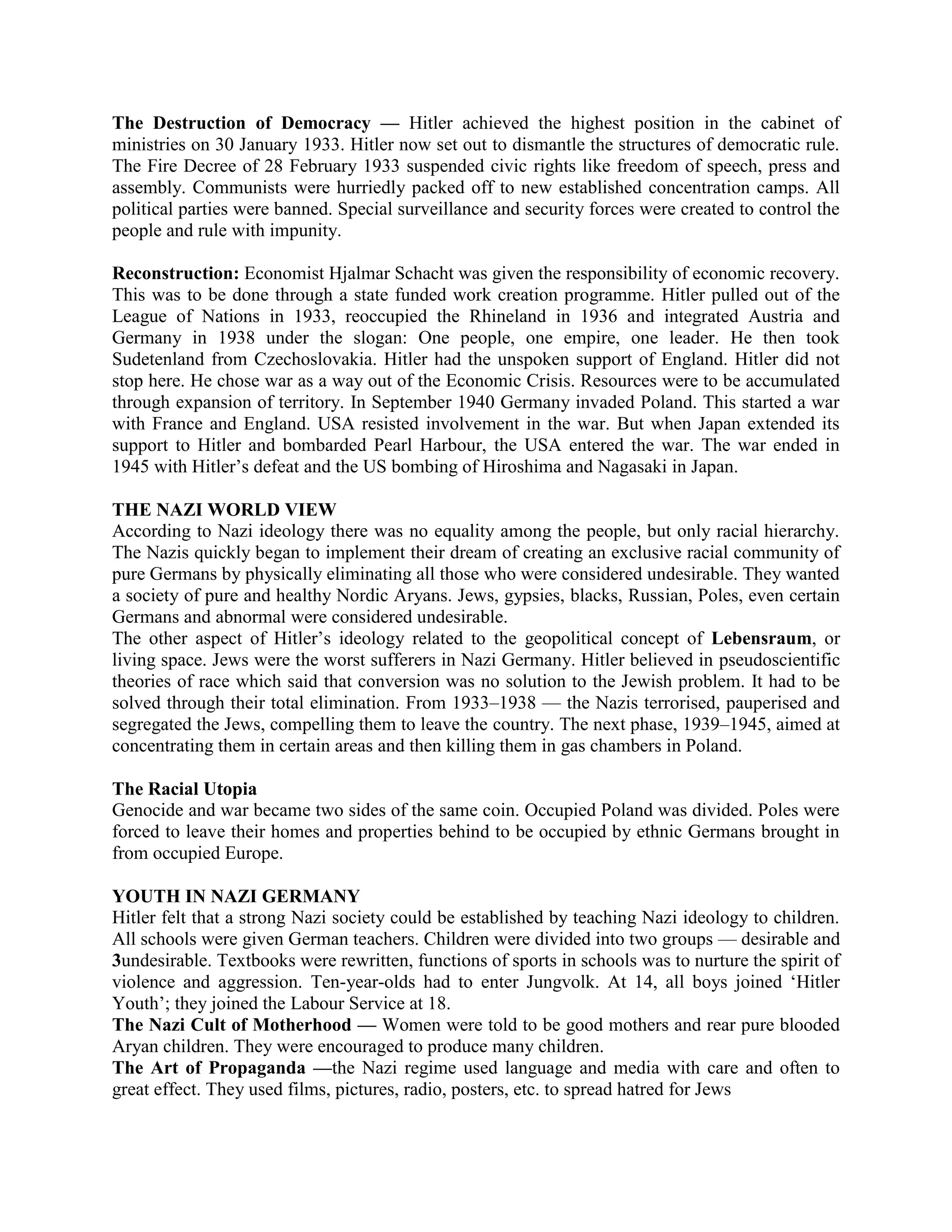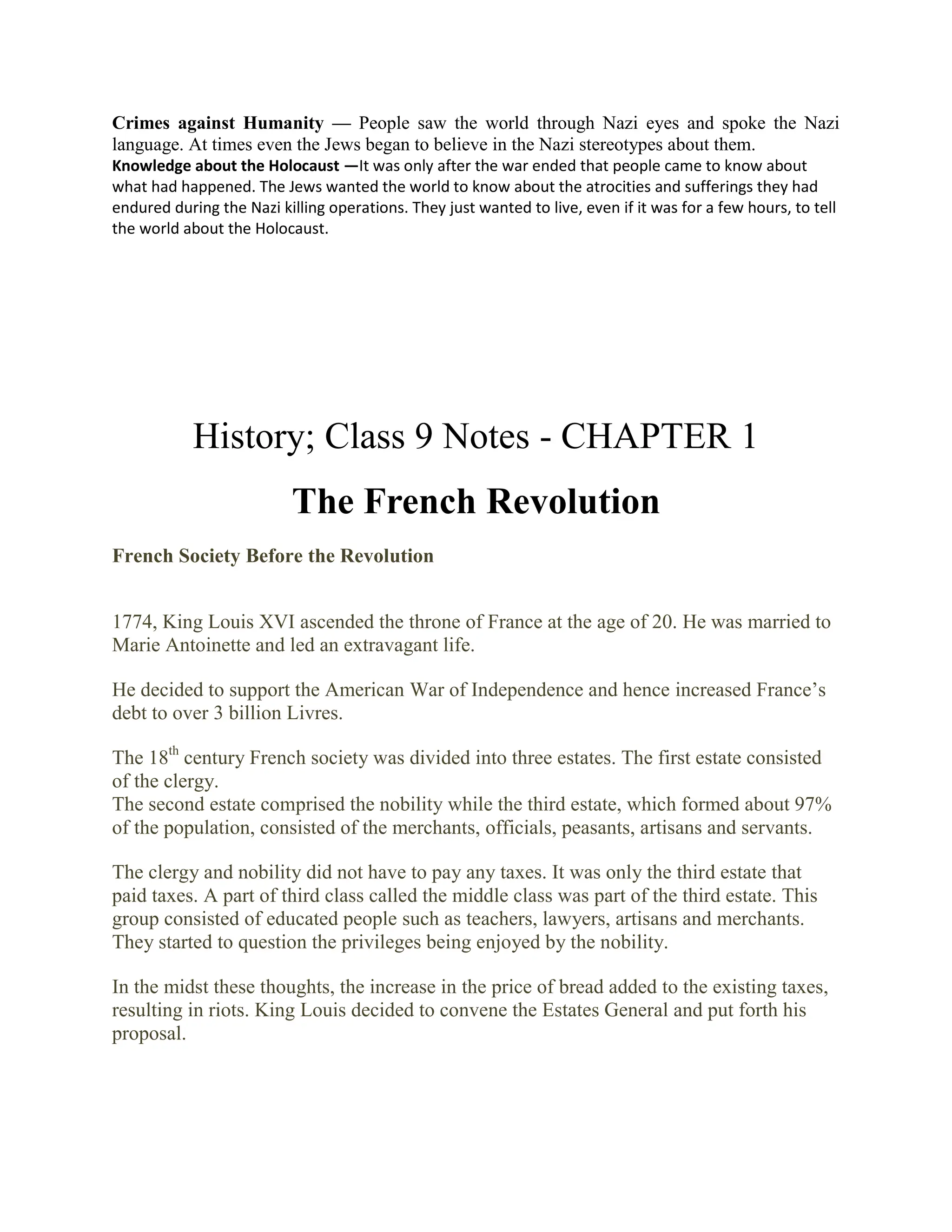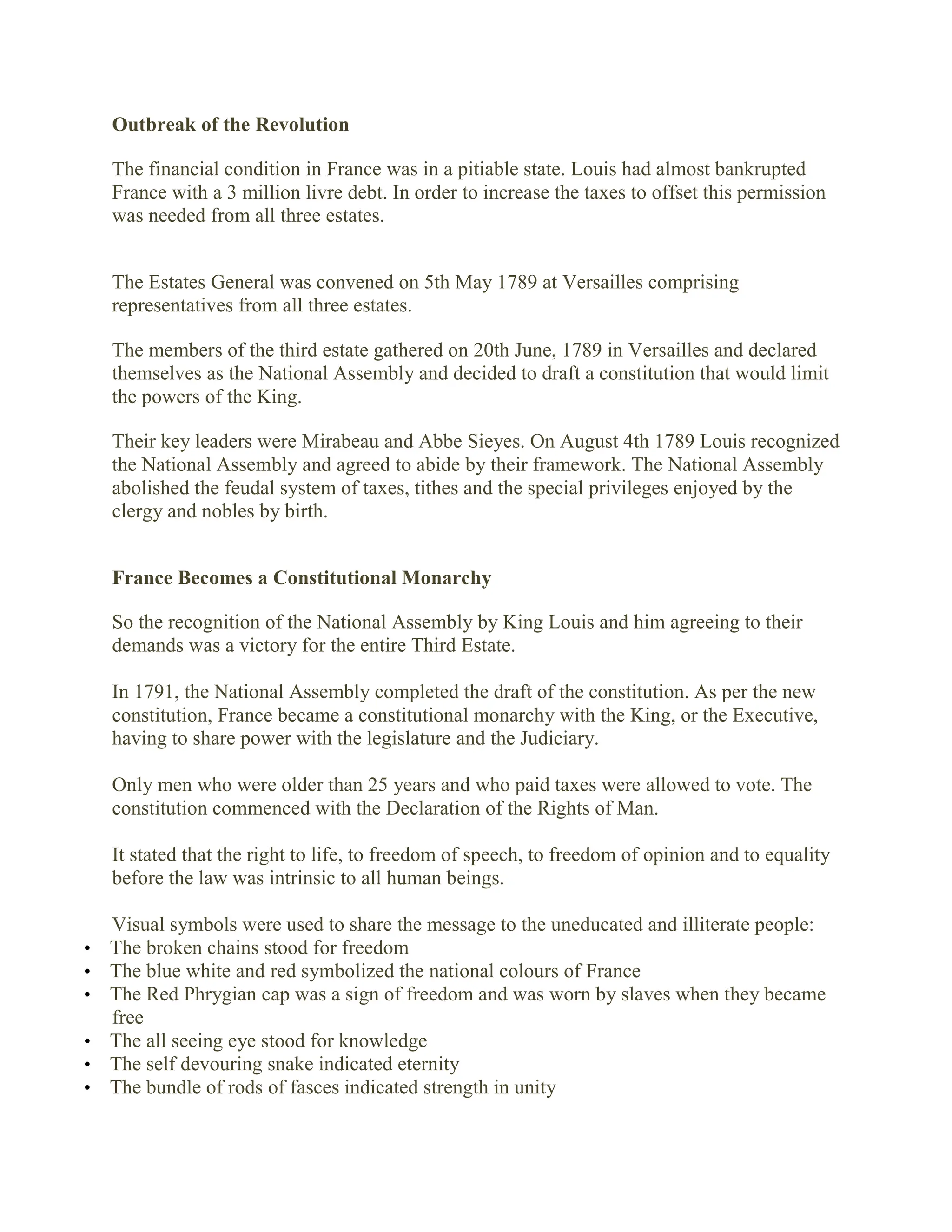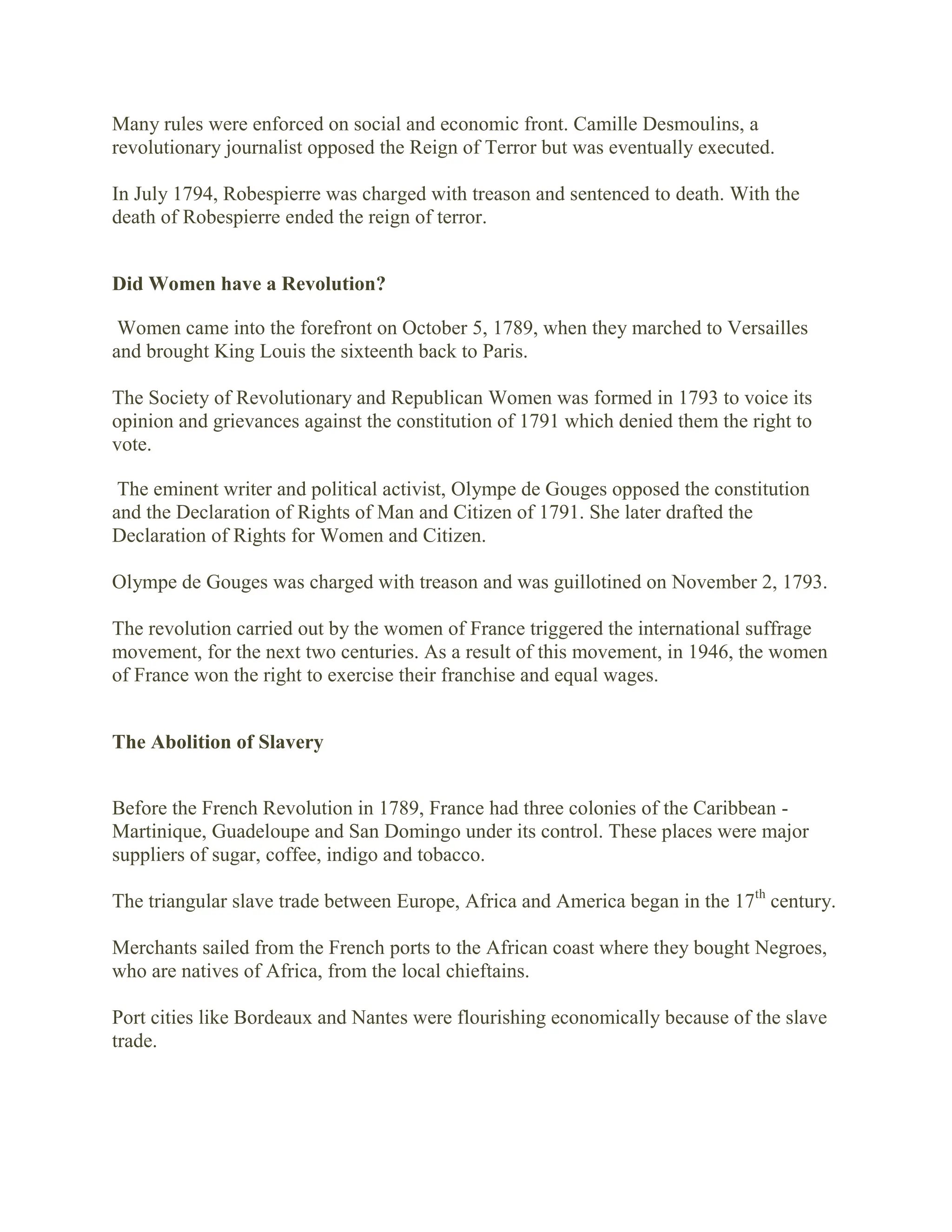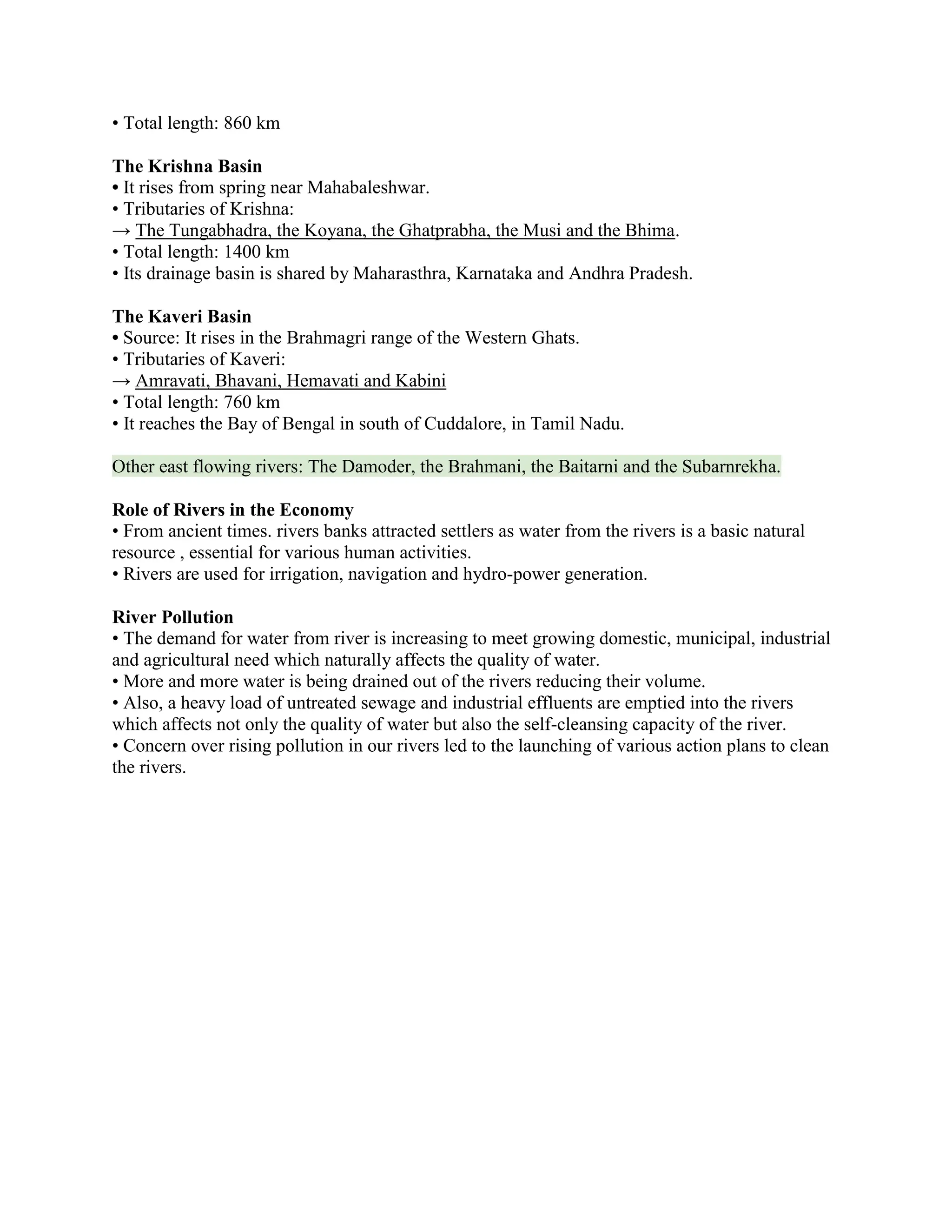The document provides a summary of the rise of Nazism and Hitler in Germany. It discusses how Germany was defeated in WWI and faced harsh conditions in the Treaty of Versailles, leading to instability. The Great Depression further exacerbated economic issues and political radicalism grew. Hitler rose to power by promising to restore Germany's power and providing a scapegoat in Jews. Once in power, Hitler dismantled democracy and imposed a fascist dictatorship based on extreme German nationalism and racism. Jews and other groups were persecuted and the Nazi regime prepared Germany for war to expand its territory.

